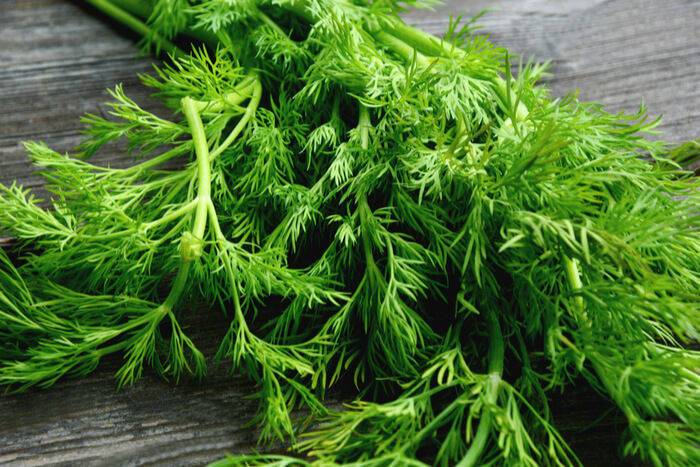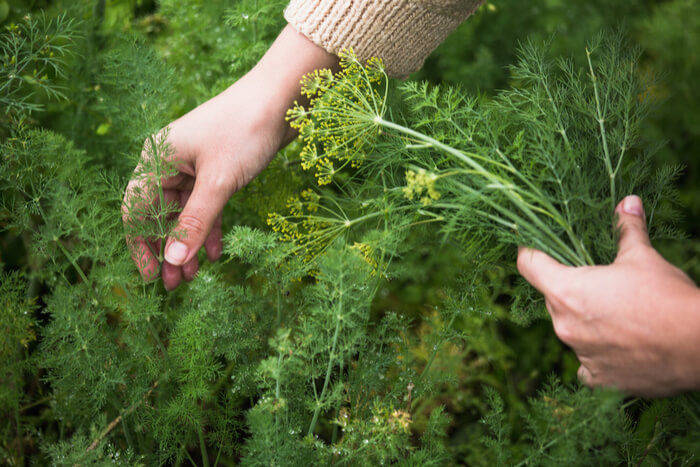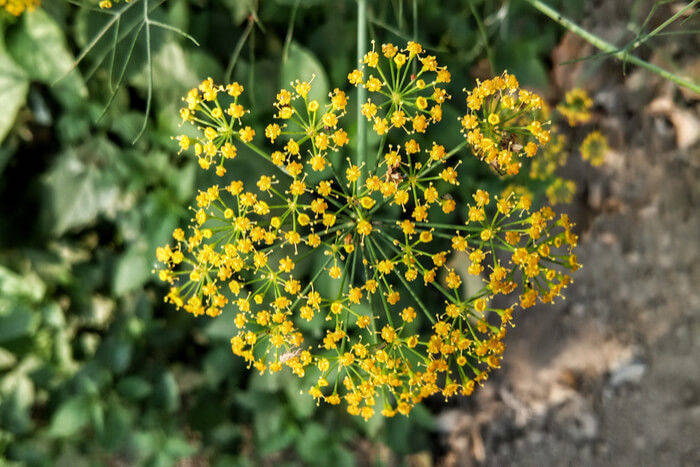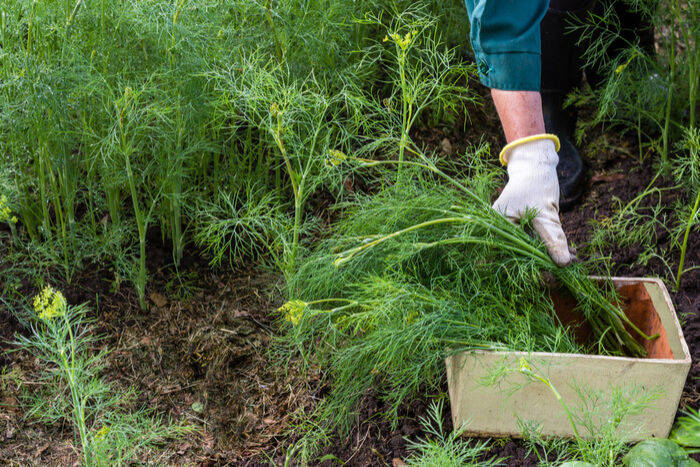Dill belongs to the same family as parsley and celery, and it is a common ingredient in baking and cooking. You can use it in many ways, depending on your preferences. You can use it when fresh, as the leaves are flavorful at this point or you can dry the leaves and seeds and use them in food. Many people use this herb when cooking fish and potatoes. However, you can use it in other dishes as well including salads and sauces.

How to use dill
If you are using fresh dill, start by washing the herbs by placing them in a strainer. Run water over them to get rid of dirt and other debris that may be on the leaves. You can then pat them dry to get rid of the excess water. Once the herbs are dry, start by getting rid of the large stems, which you can either throw away or save for use in other dishes such as meats and soups. If you use the stems in food, ensure that you get rid of them before serving the meal.
Proceed to cut up the fronds which you will use to garnish your meal. Decide on the size of the garnish, based on what you wish to prepare. You can mince the stems to make the herbs more aesthetically appealing. Minced herbs work great for baking, making sauces and cooking. They are also great for when you want to enjoy the dill raw.
You can also rely on this herb for pairing with other foods such as potatoes. Suppose you want a mild flavor in play, you can use a quarter cup of the herbs for every two and a half pounds of potatoes. It also works for mac and cheese, fish, eggs, scones, and veggies. The ways you can use this herb are countless.
Would you like to grow this herb? It will please you to know that the process is pretty straightforward and you can accomplish it in your wooden shed. Thus, if you don’t have a suitable space outdoors, you can grow it indoors with ease in a few simple steps:

Growing Dill
This herb grows annually and does well in pots as long as you provide it with proper conditions. You need to look into the temperature of the shed as it does not do well in overheated environments. Also, it helps to sow the seeds in spring such that the herb can thrive in the warm conditions that the subsequent seasons provide. You will need dill seeds, well-draining soil, a deep pot and manure from your local nursery. Here is what you need to do:
Sowing the seeds
The process begins with filling your container with well-draining soil. Note that the choice of soil will affect how well the herbs grow. Where the soil retains water such that it forms puddles, the herbs will be at a risk of root-rotting owing to water retention. Making holes at the bottom of the pot ensures that the excess water can drain with ease. As you fill the container, ensure that you do so up to the ¾ level, leaving ¼ unused. The container that you use should be at least ten inches deep and if you can get a vessel that is bigger than this, all the better. Dill roots tend to expand at rapid rates and where they have room to grow, the resultant leaves are delicious.
If the soil in your compound does not drain well, you can get some from the local nursery or a hardware store. There is a simple test that you can use to determine the draining capabilities of your soil. Start by digging a hole and filling it with water. Give the water 24 hours to drain and check if all the water percolates. If there is water in the hole, it is indicative that the drainage is not sufficient. If there is no water, fill the void again and give it another day. If there is no water in the hole, you can use the soil. It helps to check the rate at which the water drains such that if it is too fast, you can get soil from an alternative site.
Note that when this herb is in the outdoors, it can withstand poor soil. However, where you choose to have it in the wooden shed, you must get nutrient-rich and well-drained soil.

You need to enhance the nutrient content of the soil, and you can do this by adding potting compost to the pot. This mixture will allow the seeds to get the nutrition they need and will enable them to have a high production of leaves. You can mix in the compost with your hands or a trowel. Potting compost is available in local nurseries.
Place the seeds in the soil at a depth of at most one inch. It is necessary for the seeds to be near the surface as this will enable them to germinate at a fast rate. Do not compact the soil when covering the seeds and where possible, carry this out with a small rake. The seeds should have a spacing of at least twelve inches as this will allow the branches to grow wide without getting entangled in each other. Where you plan on having multiple herbs in your shed, you can opt to have a large planter or several pots.
The seeds will sprout in about two weeks, and once this happens, you should not replant them as this can disturb the roots and negatively affect their growth.
Aftercare
You need to keep the seedlings at a temperature of about twenty-one degrees Celsius as they prefer cool conditions. Thus, it helps to adjust the conditions in the shed to avoid the wilting and dying of the herbs. The plants should receive at least five hours of direct sunlight per day, and you should, therefore, have them near a south-facing window.

As the plants mature, place two-foot stakes near their bases to offer them support as their stalks may not be strong enough to carry their weight. Watering should take place twice each week. Aim for the soil, and not the leaves as this could cause mildew. Do not wet the soil and instead aim at making it damp and always check if there is a need for watering before moistening the dirt.
Harvesting
Once the plants have four or five leaves, you can start harvesting them. The maturity will take place about two months after planting.
That’s all you need to know regarding how to plant dill and where you can use it. All the best of luck to you!




